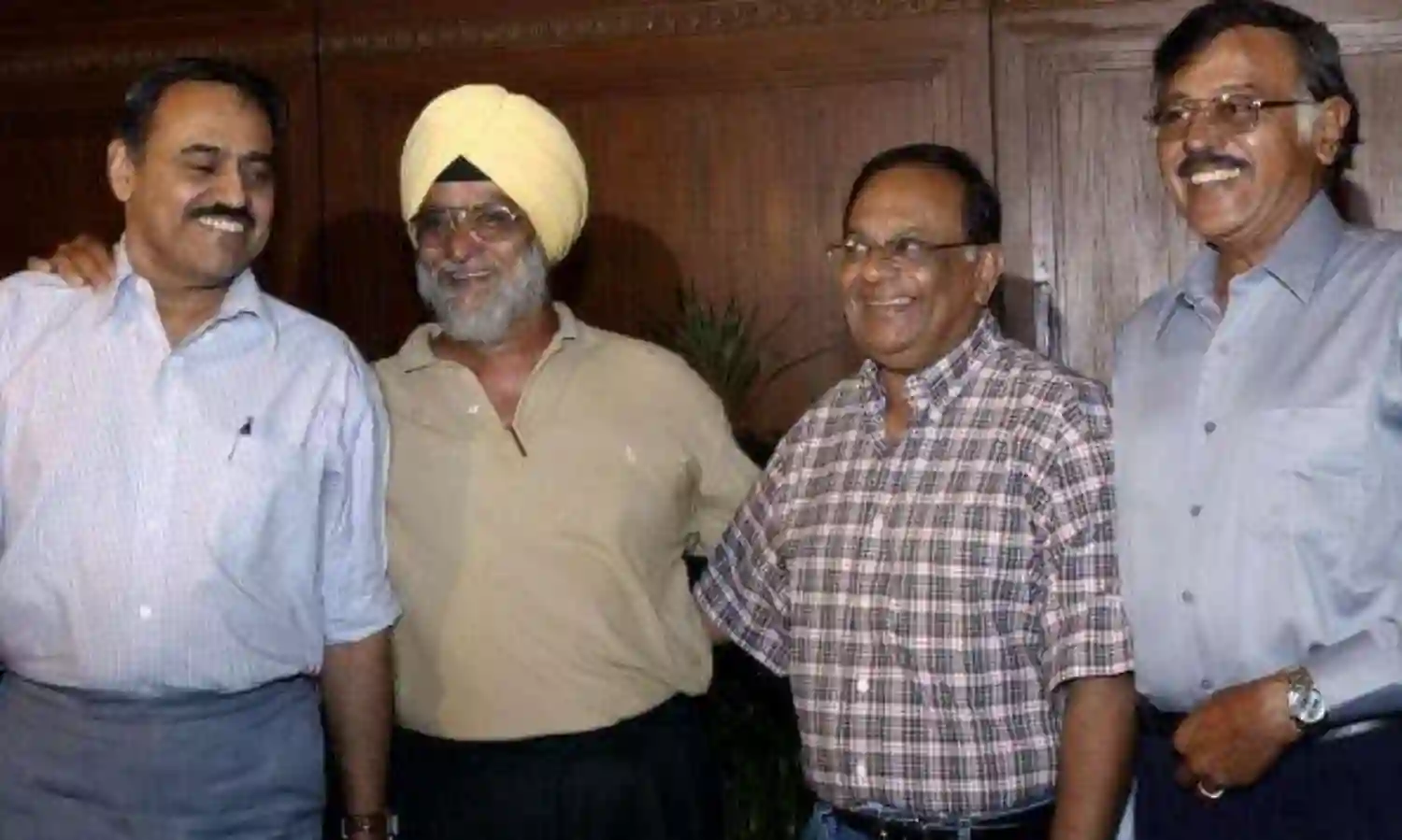Spin Bowling - Indian Cricket’s Richest and Most Durable Tradition
Down Memory Lane

To the casual follower of Indian cricket it may appear uncanny how the spin bowling tradition has been maintained for several decades with two or even three world class bowlers operating at the same time. But to be candid the tradition is so strong that one is sure it will never be snapped. Such thoughts came to mind while watching Ravi Ashwin and Ravindra Jadeja performing in tandem in the just concluded Test series against South Africa.
The famed spin quartet of the 60s and 70s was of course the apotheosis as far as the history of spin bowling in this country was concerned. To have Bishen Bedi, BS Chandrasekhar, Erapalli Prasanna and S Venkatraghavan all bowling at the same time was a sight that surely will never be seen again. Between them they took 853 wickets at a time when the Indian new ball attack was a joke and a farce.
During their time the Indian new ball attack was operated by the likes of ML Jaisimha, Eknath Solkar, MAK Pataudi, Ajit Wadekar, Sunil Gavaskar, Salim Durrani, V Subramanyam and Budhi Kunderan. Besides, the batting was generally brittle. Everything really depended on the quartet and quite often they were forced to defend ridiculously low targets and this they frequently did successfully. They also helped shape several notable away victories.
Before the four bowlers struck up their famous combination there was the first great Indian spin trio in Vinoo Mankad, Ghulam Ahmed and Subash Gupte in the fifties, Mankad of course was the first great Indian all rounder but with all his feats with the bat it was his classical left arm spin bowling that pleased the connoisseur no end. Ghulam Ahmed was an off spinner in the classical mould while Gupte was the best of his type in the world. A leg spinner cum googly bowler of the highest class Gupte bamboozled the best of batsmen with his guile and flight. No less a personality than Gary Sobers ranked him as the best leg spin bowler he had ever seen.
As I said the spin quartet followed raising the standards of Indian spin bowling even further but even with such a strong tradition there was some trepidation when the quartet broke up in the late seventies. Would the successors be adequate or successful enough was the question every cricket fan asked. There should have been no worry on this count. Into the breach stepped Dilip Doshi, Maninder Singh and Shivlal Yadav with all rounder Ravi Shastri too around to lend more than a helping hand. The three left arm spinners along with Yadav an off spinner saw India through a successful transition in the 80s.
In the 90s there emerged the giant figure of Anil Kumble who with some help mainly from Venkatpathi Raju kept the Indian flag flying through the decade. Kumble a leg spinner in the Chandrasekhar mould proved to be the match winner supreme and his crowning glory was taking all ten wickets against Pakistan at New Delhi in 1999.
In the new millennium Kumble was joined by Harbhajan Singh and the two maintained India’s spin reputation successfully through the first decade. Harbhajan a feisty character and an attacking off spin bowler of the highest order played the leading role in India’s greatest series triumph at home against the formidable Australians in 2001 with 32 wickets in the three Tests.
When a legend like Kumble called it a day in 2008 there was a sense of trepidation all over again. Could Harbhajan be successful on his own? On the contrary such has been the strength of the Indian spin attack in the second decade of the new millennium that Harbhajan had to remain content playing a supporting role and then was discarded altogether as first Ashwin and then Jadeja came on the scene and they have been phenomenally successful bowling in tandem setting up records left, right and centre. And such is the variety that is available these days that these two have become specialist Test bowlers while Kuldeep Yadav and Yuzvendra Chahal are the main spinners in ODIs.
India’s batting has seen brittle days though it has been strong for quite a while now.The pace bowling after woeful times is now at an all time high. But there has never been a question mark when it comes to Indian spin bowling. The highest levels have always been maintained when it comes to Indian cricket’s richest and most durable tradition.



